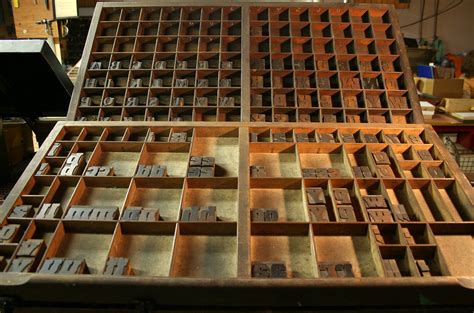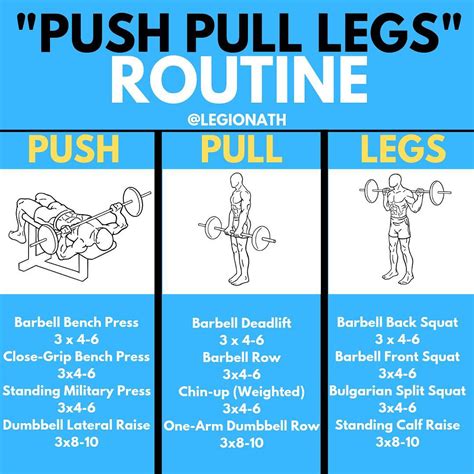What’s the most efficient 4-day split for muscle gains & peak performance?

For many fitness enthusiasts, the 4-day workout split strikes a perfect balance between training frequency, recovery, and intensity. It offers ample opportunity to hit muscle groups effectively while allowing enough time for repair and growth. But with numerous variations, how do you pinpoint the most efficient one for maximizing muscle gains and achieving peak performance?
Understanding the Power of a 4-Day Split
A 4-day split typically involves training four days a week, dedicating specific days to different muscle groups or movement patterns. This approach allows for higher volume per muscle group per session compared to a full-body split, and more recovery time for individual muscles than a 5 or 6-day split. The goal is to stimulate muscle protein synthesis sufficiently without overtraining, leading to consistent progress in strength and hypertrophy.
The efficiency of a 4-day split lies in its ability to target muscles with enough frequency (usually twice a week, directly or indirectly) and intensity. This balance is crucial for driving adaptation, which translates directly into muscle growth and improved physical capabilities. Choosing the right structure is paramount to harnessing these benefits.
Popular & Effective 4-Day Split Variations
Several tried-and-true 4-day split templates can lead to exceptional results. Each has its own merits, and the “best” one often depends on individual preferences, recovery capacity, and specific goals.
1. Upper/Lower Split
This is arguably one of the most popular and effective 4-day splits. You dedicate two days to upper body workouts and two days to lower body workouts, often alternating them throughout the week (e.g., Upper, Lower, Rest, Upper, Lower, Rest, Rest). This allows you to hit each major muscle group twice a week with adequate recovery in between.
- Pros: High frequency for all major muscle groups, excellent for strength and hypertrophy, relatively simple to program.
- Sample Schedule:
- Day 1: Upper Body A
- Day 2: Lower Body A
- Day 3: Rest
- Day 4: Upper Body B
- Day 5: Lower Body B
- Day 6-7: Rest

2. Push/Pull/Legs (PPL) Modified
While often seen as a 6-day split, PPL can be adapted for a 4-day routine, though this typically means hitting muscle groups less frequently unless cleverly structured. A common 4-day PPL-inspired approach might involve grouping: Push, Pull, Legs, and then a dedicated strength or weakness day, or a full-body conditioning day. However, for hitting muscle groups twice weekly within a strict 4-day lifting schedule, an Upper/Lower split often proves more efficient. If you choose a PPL approach for a 4-day cycle, ensure you’re still achieving sufficient frequency for growth.
A more common 4-day variant derived from PPL principles might look like:
- Day 1: Push (Chest, Shoulders, Triceps)
- Day 2: Pull (Back, Biceps)
- Day 3: Rest
- Day 4: Legs (Quads, Hamstrings, Glutes, Calves)
- Day 5: Full Body / Weakness Day / Active Recovery (Optional)
- Day 6-7: Rest

3. Body Part Split (Modified)
A classic body part split typically dedicates a full session to one or two muscle groups (e.g., Chest day, Back day). For a 4-day variant, you might group muscle groups more strategically to maximize effort and recovery:
- Day 1: Chest & Triceps
- Day 2: Back & Biceps
- Day 3: Rest
- Day 4: Legs & Shoulders
- Day 5: Rest / Core
- Day 6-7: Rest
While popular and allowing for very high volume on a specific muscle group, this split usually offers less frequency per muscle group (once a week) compared to an Upper/Lower split. For natural lifters, hitting muscles more frequently (2x per week) is often more optimal for hypertrophy, making Upper/Lower generally more efficient for muscle gains.

Key Principles for Maximizing Gains and Performance
Regardless of the split you choose, certain universal principles underpin successful muscle growth and performance enhancement:
- Progressive Overload: Continuously challenge your muscles by increasing weight, reps, sets, or decreasing rest times. This is the fundamental driver of adaptation.
- Proper Form: Prioritize quality over quantity. Incorrect form not only reduces effectiveness but significantly increases injury risk.
- Nutrition: Fuel your body with adequate protein for muscle repair, sufficient carbohydrates for energy, and healthy fats for overall health. A caloric surplus is often needed for muscle gain.
- Recovery: Muscle growth happens outside the gym. Ensure 7-9 hours of quality sleep and incorporate active recovery or rest days to allow your body to repair and rebuild.
- Exercise Selection: Focus on compound movements (squats, deadlifts, bench press, overhead press, rows) as the foundation of your routine, supplemented by isolation exercises.
- Periodization: Vary your training intensity and volume over time to avoid plateaus and prevent overtraining.

Sample 4-Day Upper/Lower Split for Muscle Gains
Here’s a practical example of an efficient Upper/Lower split, designed to hit major muscle groups twice a week:
Day 1: Upper Body A
- Barbell Bench Press: 3 sets x 6-10 reps
- Pull-ups/Lat Pulldowns: 3 sets x 8-12 reps
- Dumbbell Overhead Press: 3 sets x 8-12 reps
- Barbell Rows: 3 sets x 6-10 reps
- Dumbbell Bicep Curls: 3 sets x 10-15 reps
- Triceps Pushdowns: 3 sets x 10-15 reps
Day 2: Lower Body A
- Barbell Squats: 3-4 sets x 5-8 reps
- Romanian Deadlifts: 3 sets x 8-12 reps
- Leg Press: 3 sets x 10-15 reps
- Leg Curls: 3 sets x 12-15 reps
- Calf Raises: 3 sets x 15-20 reps
Day 3: Rest
Day 4: Upper Body B
- Incline Dumbbell Press: 3 sets x 8-12 reps
- Seated Cable Rows: 3 sets x 8-12 reps
- Lateral Raises: 3 sets x 12-15 reps
- Close-Grip Bench Press: 3 sets x 8-12 reps
- Face Pulls: 3 sets x 12-15 reps
- Hammer Curls: 3 sets x 10-15 reps
Day 5: Lower Body B
- Deadlifts (conventional or sumo): 1-2 sets x 3-5 reps (after warm-up)
- Bulgarian Split Squats: 3 sets x 8-12 reps per leg
- Leg Extensions: 3 sets x 12-15 reps
- Glute Ham Raises/Good Mornings: 3 sets x 10-15 reps
- Ab Rollouts/Plank: 3 sets x failure/hold
Day 6-7: Rest
Tailoring Your Split for Peak Performance
The “most efficient” split is ultimately the one you can adhere to consistently, that allows for adequate recovery, and that you enjoy. Experiment with different variations to see what your body responds to best. Consider incorporating deload weeks, periodization (e.g., blocks of strength training followed by hypertrophy), and specific conditioning work if your goal extends beyond pure aesthetics to athletic performance.
Listen to your body, track your progress, and be willing to adjust your routine as your strength, recovery, and goals evolve. Consistency, combined with intelligent programming, will always be the most powerful tools for achieving sustained muscle gains and peak physical performance.










